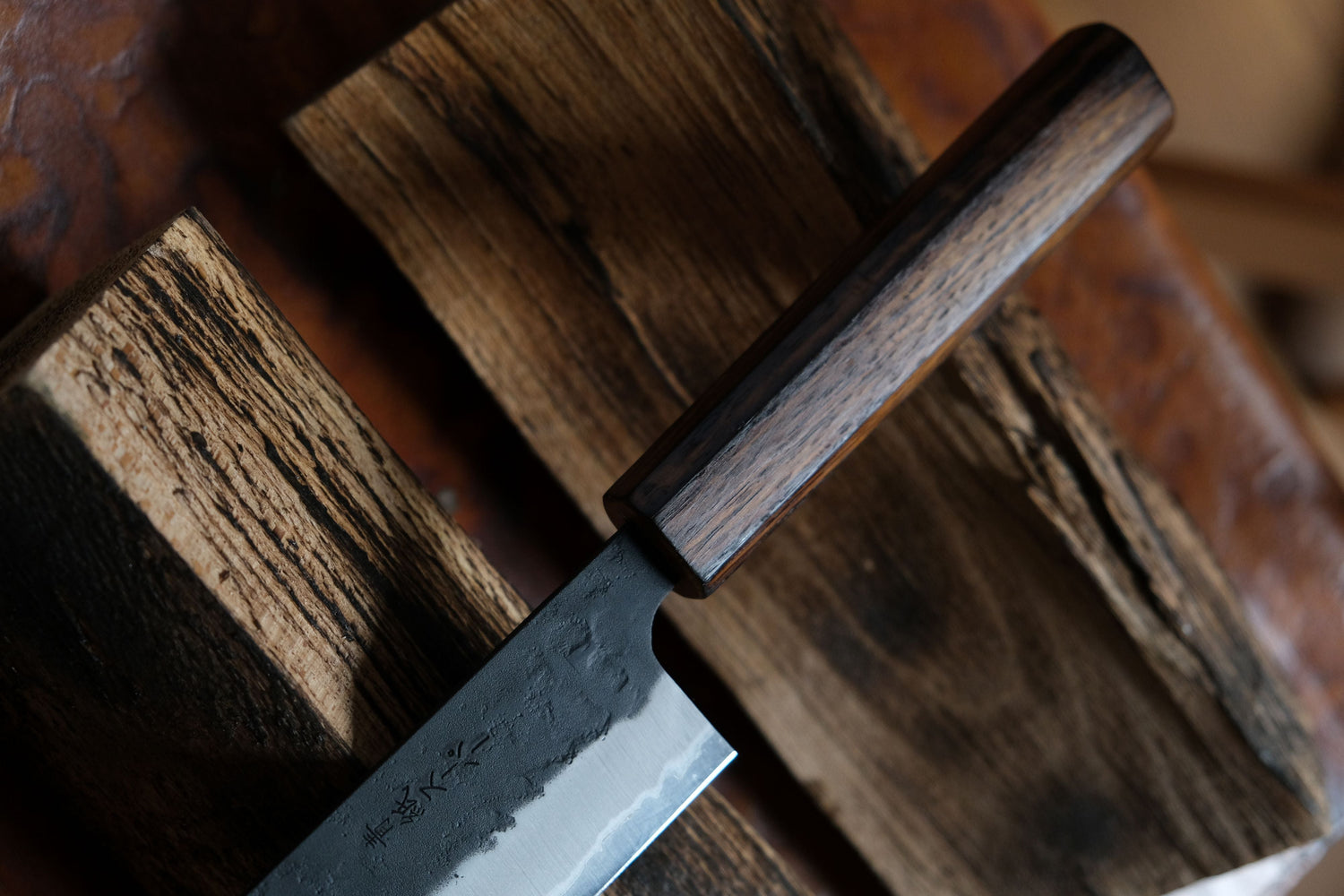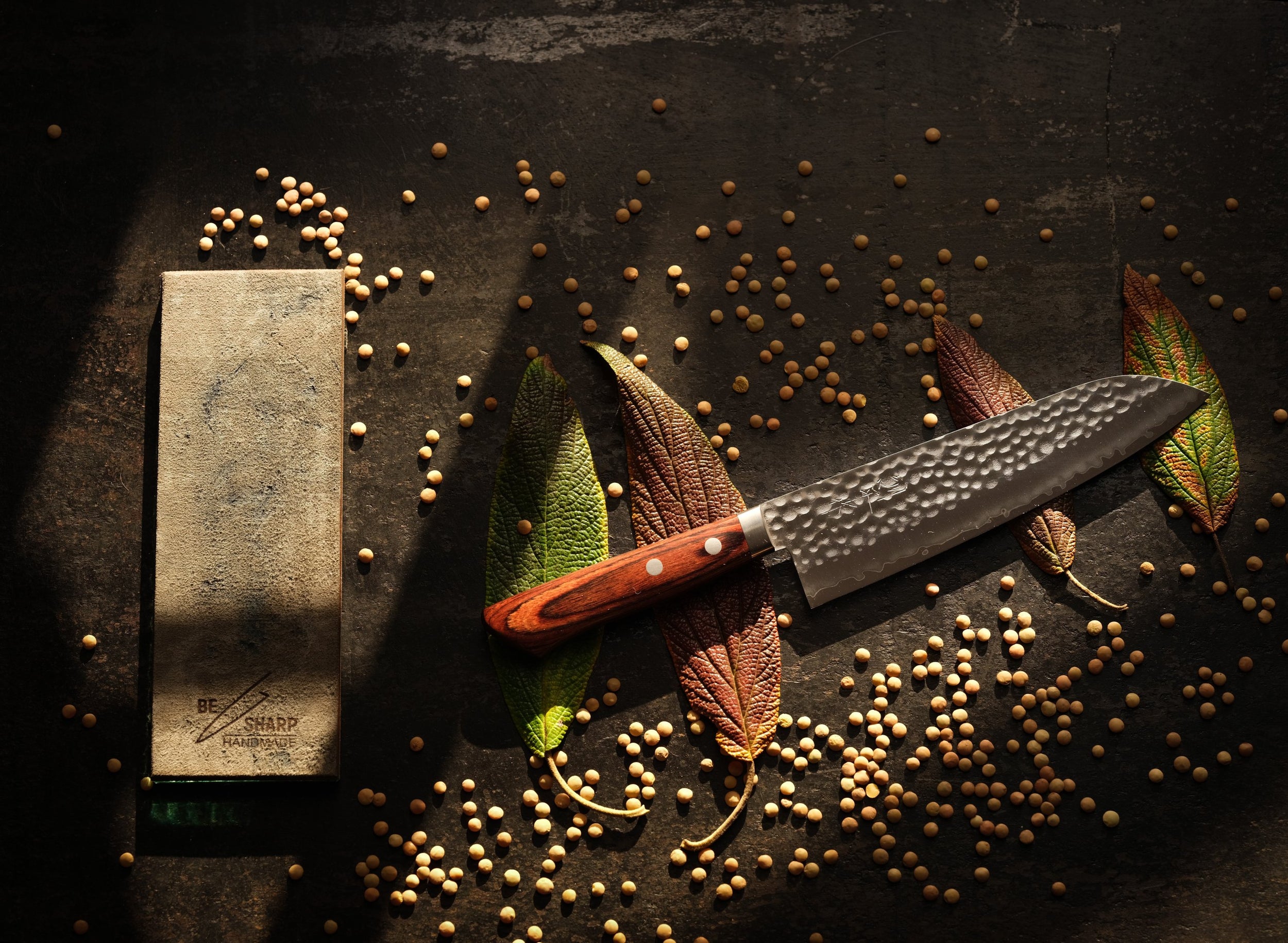Knife handle

Each knife consists of a blade and a handle. Although the blade is the main star of the show that we all notice first, the handle will also be a deciding factor when choosing a knife. There are many different handles that are put on knives, but they all have the same task: to provide the user with a secure grip when using the knife. In Japan, making knife handles is a highly valued craft, and there are entire factories that service the manufacture and installation of knife handles. Many blacksmiths are happy to use these services because they believe that just as they specialize in forging blades, fitting the handle should be done by a highly trained person for the job.

For decades, handles in Japan were made of the worst quality materials because they were considered irrelevant, were often replaced, and were truly the Achilles' heel of Japanese knives. With the modernization of production and the increase in standards related to the quality of the handle in the world, they have adapted the production so that even the most demanding users cannot complain. We classify the handle of a knife according to the following bases: the shape of the handle, the way the handle and the blade are joined and the material from which the handle is made.
HANDLE SHAPE
According to the shape, the handles are divided into: traditional Japanese, Western style and hybrids.
Traditional Japanese handles (Wa Handle) can be octagonal, oval or D-shaped. These handles give a lighter overall feel and balance to the knife forward. Most often, they consist of two parts, the larger one - the body of the handle, which is made of different types of natural or stabilized wood, and the smaller part - the collar of the handle. The collar has the task of securing the part where the handle is closest to the blade and where it actually ends up with the most pressure during use. Traditionally, the handle collar is made from bison horn, and can be made from metal or plastic. These handles can be coated with edible oils to extend their life. If these handles get damaged over time, it is not a reason to worry, because they can be replaced very easily.

Octagonal handles, as the name suggests, have eight corners on them, which allows for a secure grip without slipping. It is not necessary that every angle on the handle has to be absolutely symmetrical, but it is increasingly popular to make these handles in an eccentric design.

The oval shape of the handle is the most traditional shape and is often seen on traditional Japanese knives. The design of these handles is very simple.

The D-shaped handle is designed to provide greater comfort for right-handed users.

Western-style handles began to be put on Japanese knives in order to meet the needs of an increasing number of users from European countries and America. The Japanese definitely know how to adopt what has proven to be good in practice. Western handles provide full control over the entire blade, are suitable for left- and right-handed users alike, and are virtually indestructible. These handles are often made of composite materials, such as micarta, eco-wood, or pakka wood. They can be made of mahogany, birch or other finer wood. Western-style handles tend to be centrally balanced, which often makes them comfortable for chefs who like a slightly heavier knife. These handles are additionally strengthened with decorative rivets or rivets.

A hybrid form would be any form that deviates from the above. Manufacturers are constantly looking for new ways to attract customers and for that purpose they come up with a wide variety of shapes, some of which look like props from science fiction movies.

JOINING THE HANDLE AND BLADE
Here we distinguish three types of handles: Full tang, Half tang and Hidden tang.
The tang is the part of the blade that goes into the handle. Therefore, Full tang would represent a handle in which the tang part passes through the entire handle and "cuts " it in half lengthwise. These handles are virtually indestructible and last as long as the blade itself. A half tang differs from a full tang in that the tang section reaches half the total length of the handle. These two types of joints are used in combination with the western handle shape. Hidden tang is a joint in which we cannot see the Tang part on the knife, but it is hidden in the handle itself. It is characteristic of Japanese handle shapes and is designed so that the handle can be easily replaced if it starts to deteriorate or we just don't like it anymore.


HANDLE MATERIAL
A very wide range of materials are used to make the handle: wood, plastic, leather, metal, resin, rubber, horns or animal bones, almost anything you can think of. As we said at the beginning of the text, previously easily available materials were used, today people often go to extremes, so you can see that someone even installs diamonds on their handle. Traditionally, Japanese handles were made from raw wood and buffalo horn, which was considered the best combination. Today, a combination of wood and plastic, wood and resin is common, but metal handles also occupy an increasingly large segment of the market due to the ease of maintaining hygiene. It should be noted here that depending on the material used to make the handle, we can guess how long it will last. Raw wood can absorb moisture and dirt which can cause faster decay. If the wood is stabilized using epoxy resin, that handle will probably last as long as the knife itself. Metal handles can be extremely heavy and uncomfortable, thus disrupting the balance of the knife, but because of this they are practically indestructible. Whichever material is involved when buying a knife, we advise you to take the knife in your hand and try to feel that pleasant contact that lies perfectly in your hand - that's the right handle for you!







